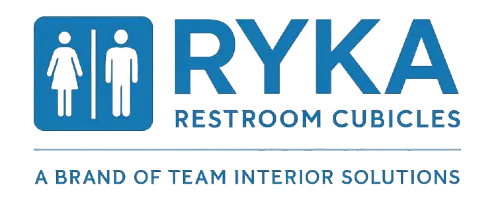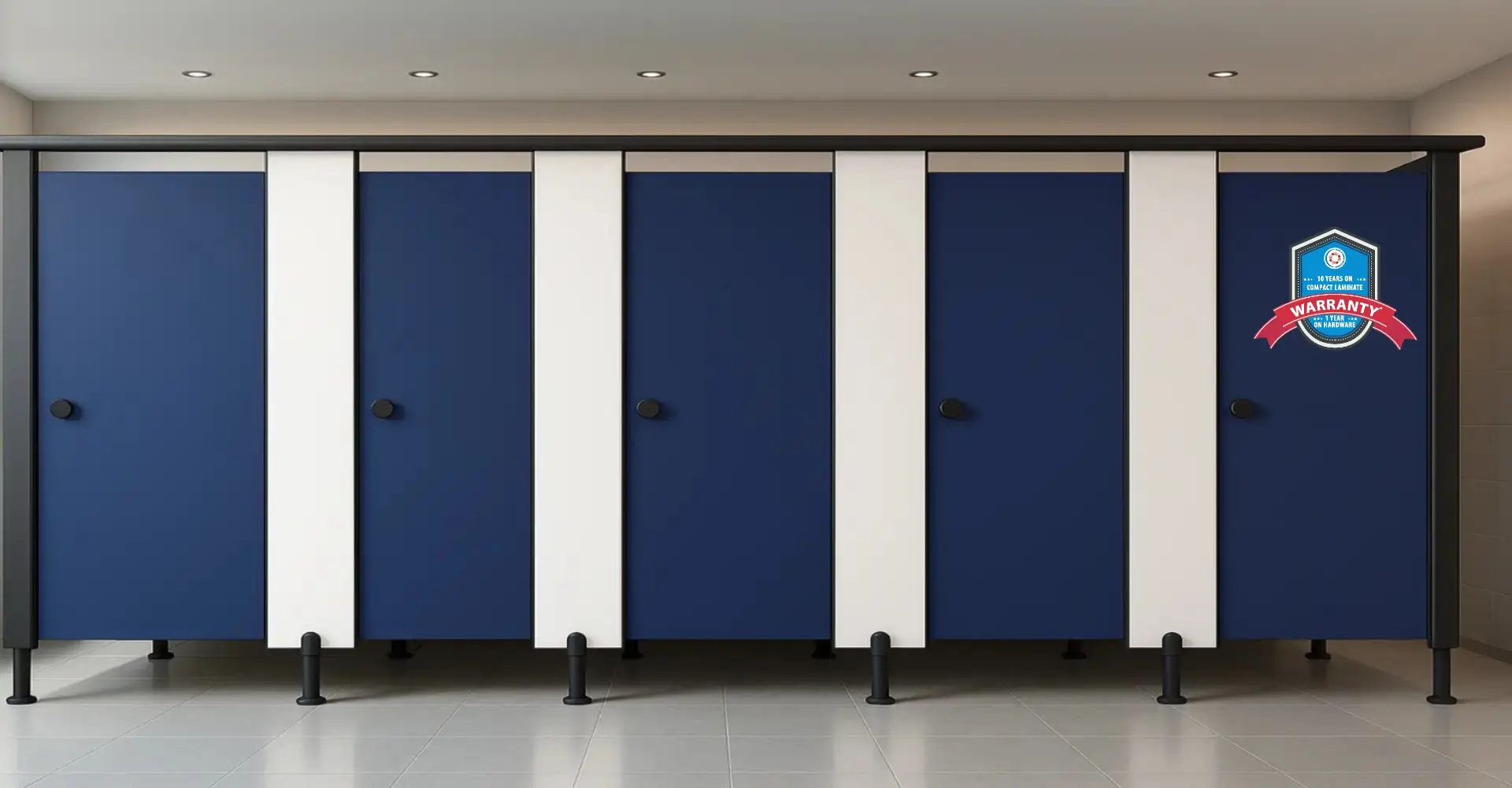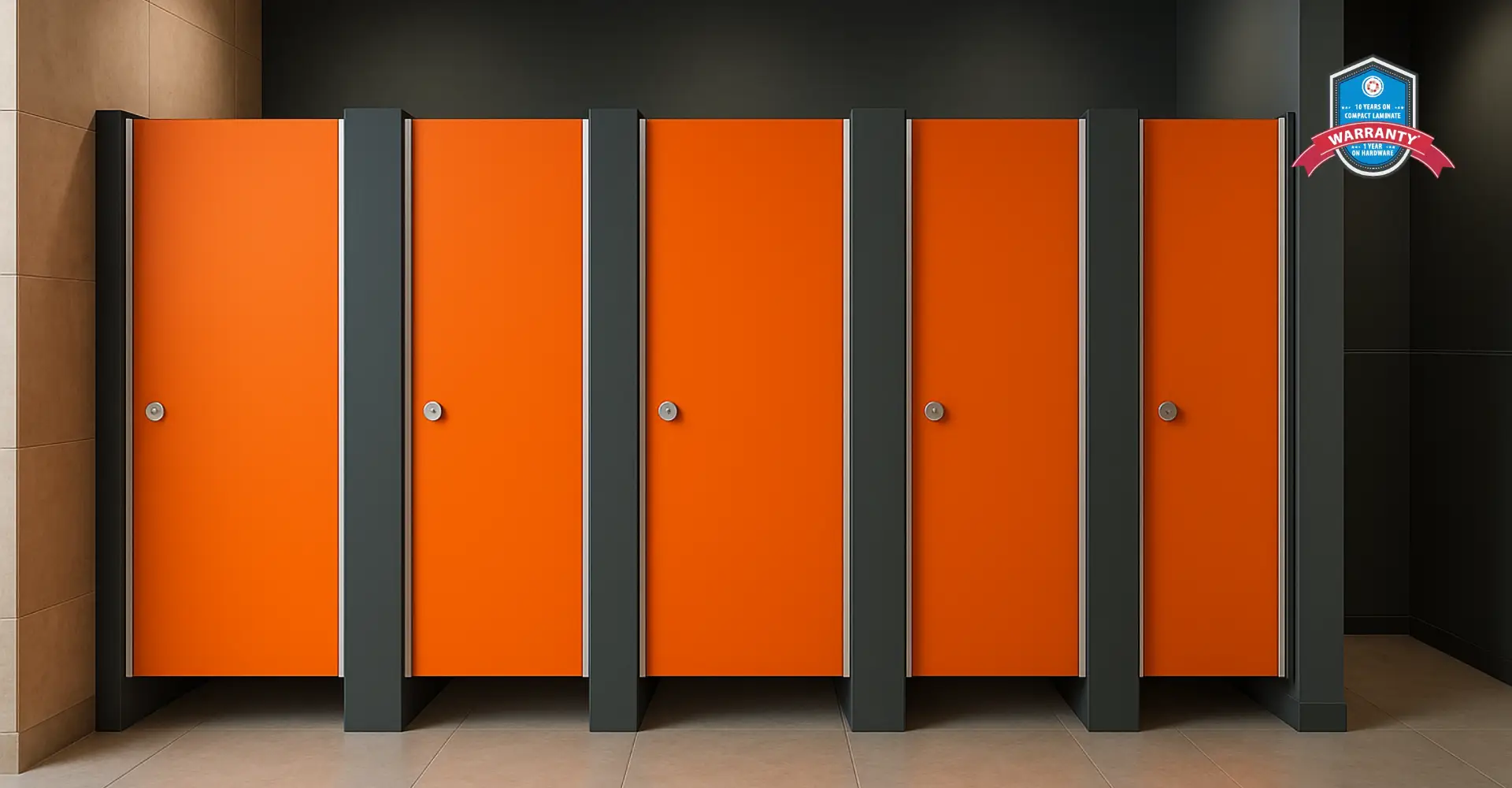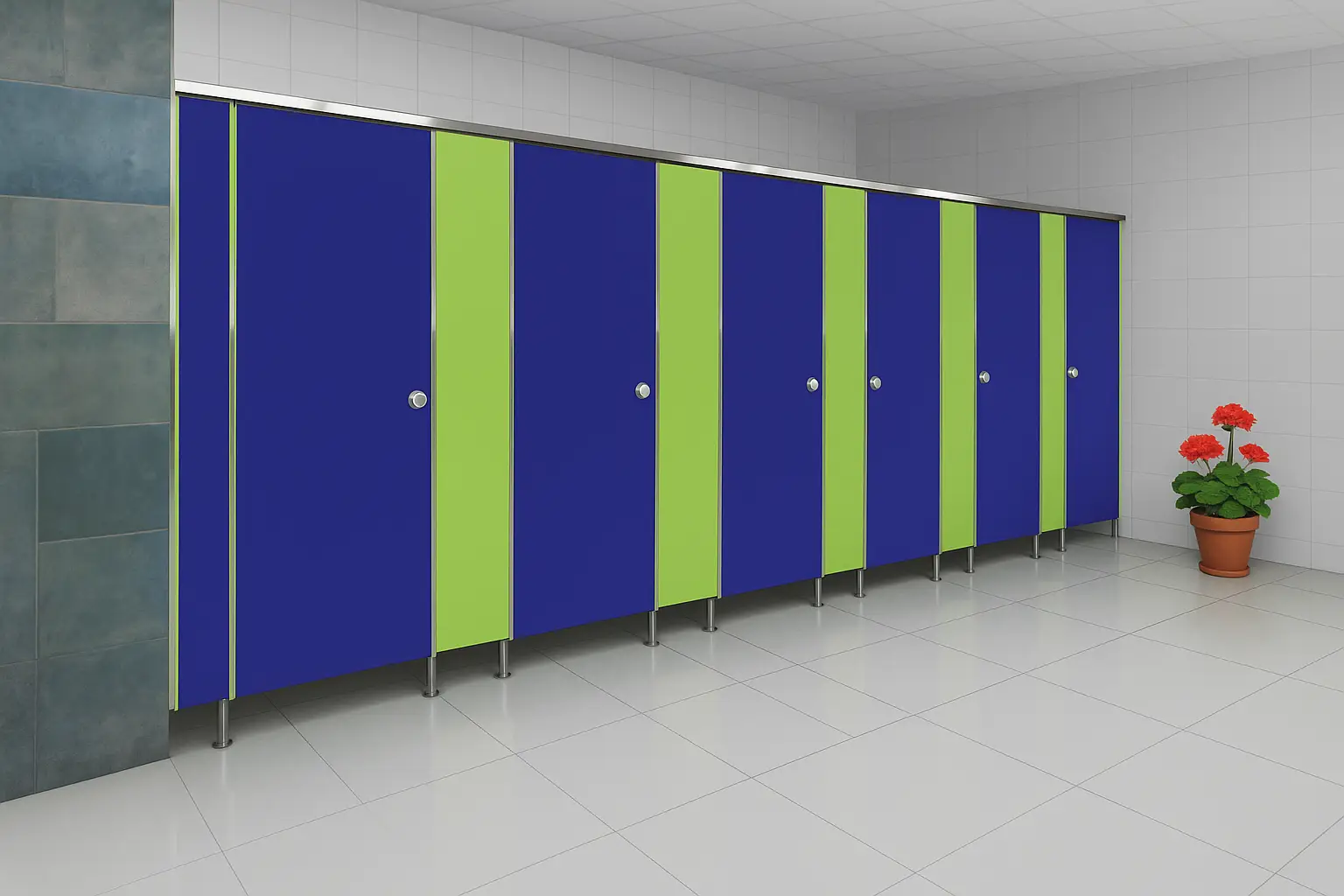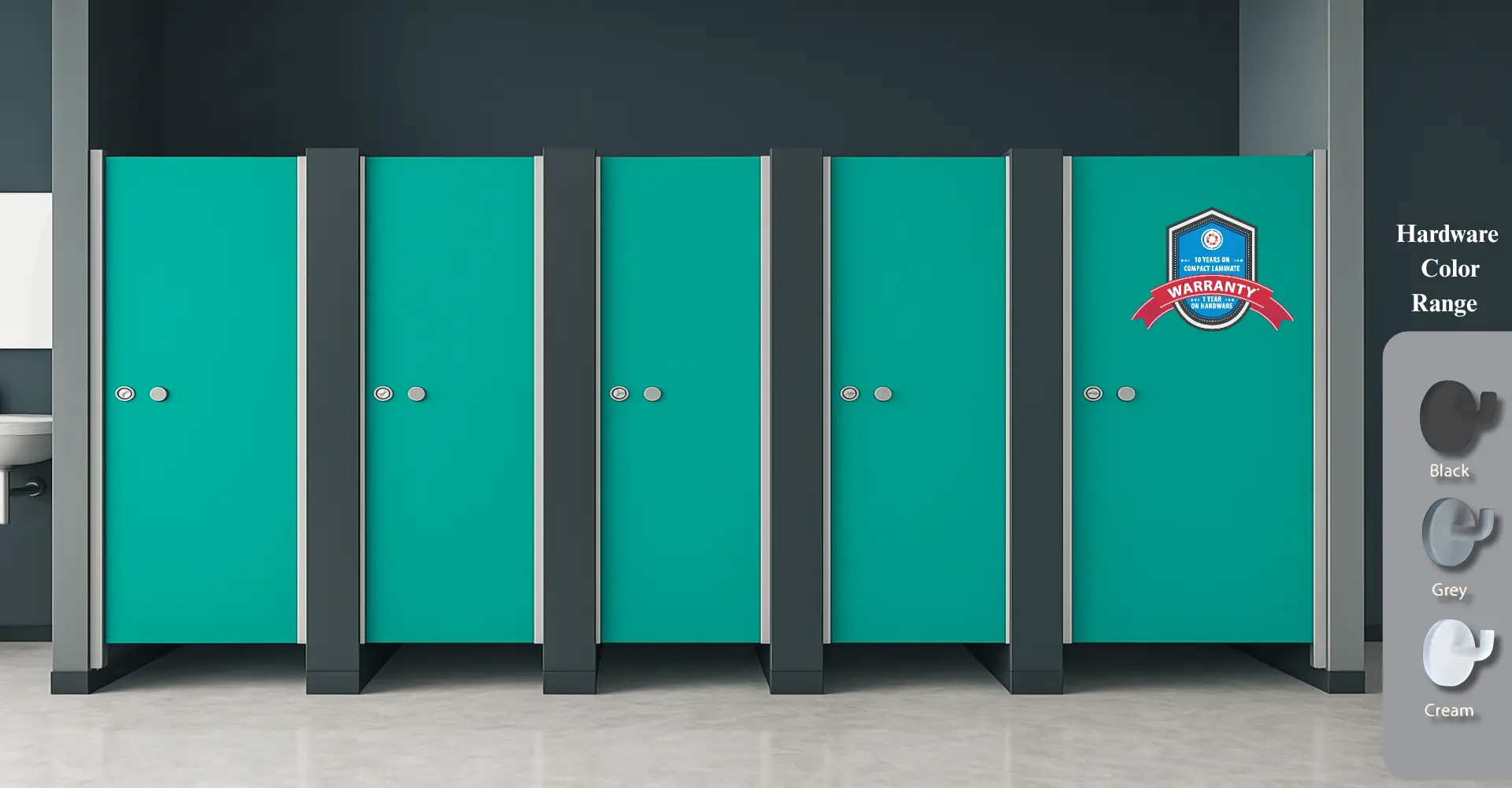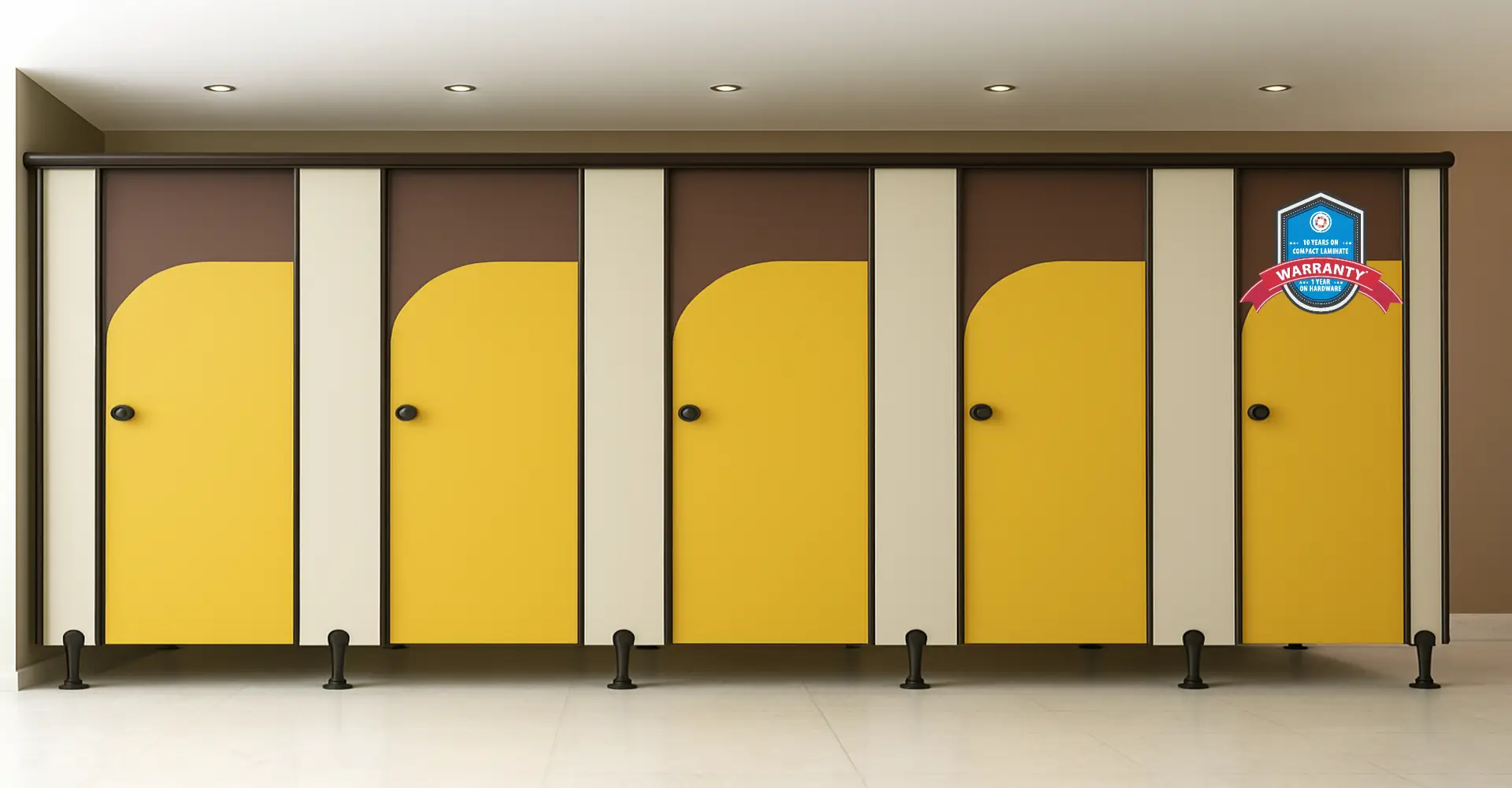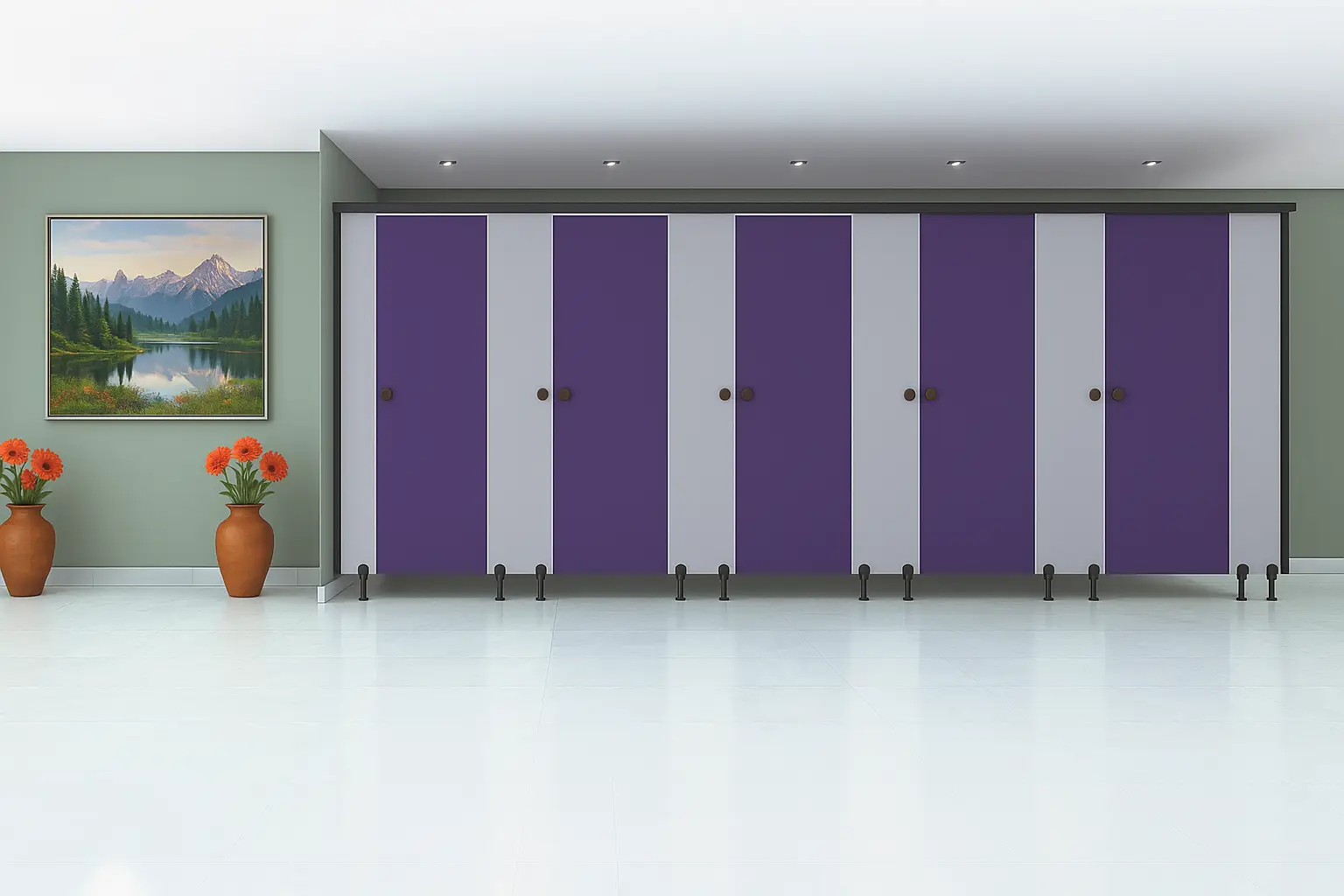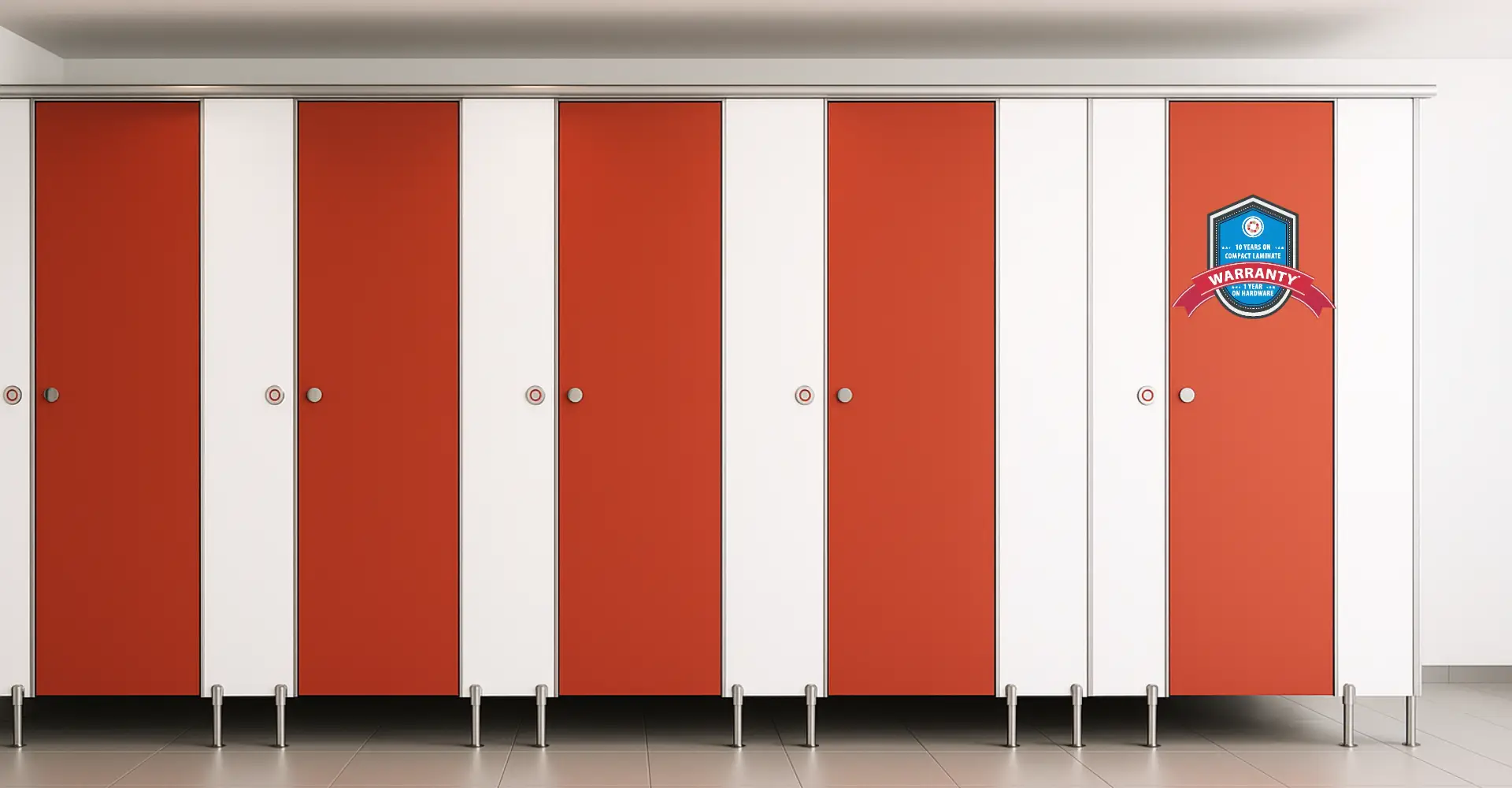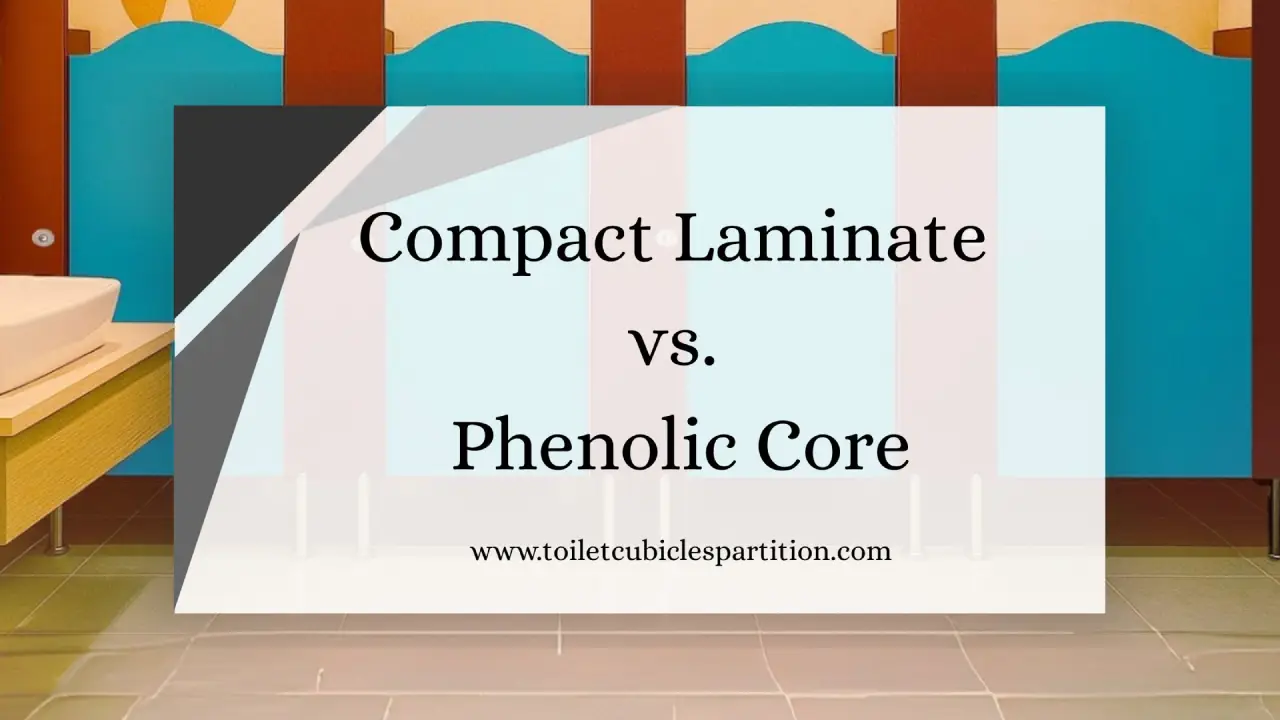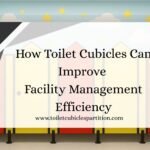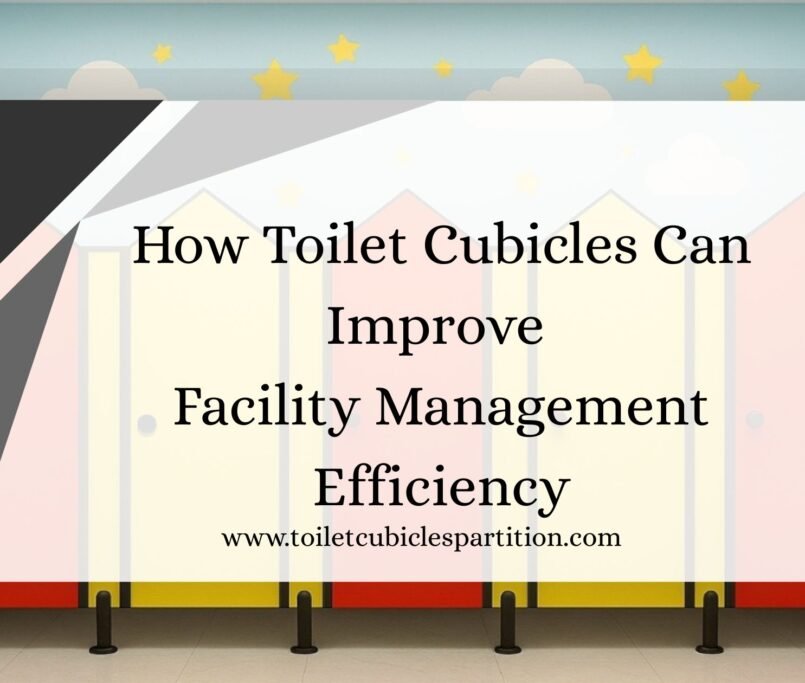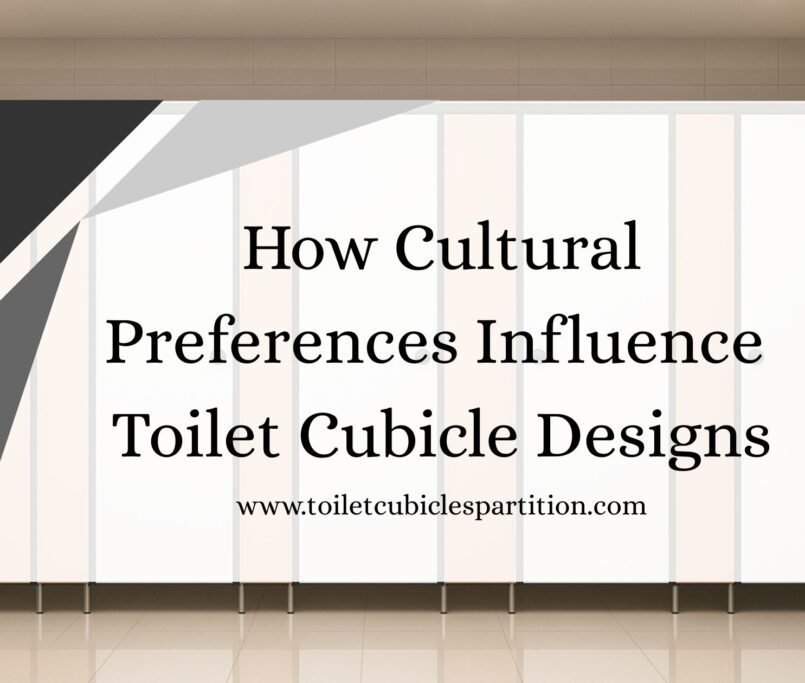Introduction
In the past, restroom partitions were often treated as secondary elements in architectural design. Today, however, they are a key factor in shaping not only the aesthetics but also the durability, hygiene, and sustainability of commercial and public restrooms. When building or renovating restrooms in offices, malls, educational institutions, airports, and other facilities, the choice of material for toilet cubicle partitions manufacturer is critical.
Among the many materials available in the market, Compact Laminate (also known as HPL or High-Pressure Laminate) and Phenolic Core Panels stand out as two of the most reliable and commonly used options. Both are durable, water-resistant, and highly suited for high-traffic environments, but they differ significantly in terms of composition, cost, performance, and long-term benefits.
In this detailed guide, we at Ryka Restroom Cubicles explore the differences between Compact Laminate and Phenolic Core, analyzing every factor from composition to aesthetics and ROI. This blog will help architects, facility managers, and decision-makers make informed choices that align with their project’s goals.
Understanding the Basics
What is Compact Laminate?
Compact Laminate is created by compressing multiple layers of kraft paper impregnated with phenolic resin under very high pressure and temperature. A decorative layer of paper treated with melamine resin is applied on the top, which provides the surface its color, design, and texture. Compact laminate sheets are available in various thicknesses, but 12 mm is the most commonly used for toilet cubicle partitions.
The material is strong, scratch-resistant, and offers extensive design flexibility. Because of its decorative surface, compact laminate comes in hundreds of shades, patterns, and finishes that allow architects to bring creativity into restroom design without compromising functionality.
What is Phenolic Core?
Phenolic Core panels, while similar in manufacturing concept, are denser and have a more homogenous structure. Instead of having a decorative top layer, the entire panel is dyed or colored through and through. This makes scratches or surface damage less visible because the color remains consistent across the entire thickness of the panel.
Phenolic core is thicker, denser, and stronger than compact laminate. It is designed for heavy-duty environments where long-term durability and superior performance are non-negotiable. This makes it ideal for airports, sports complexes, laboratories, and high-humidity applications like gym showers or swimming pool facilities.
Durability and Performance
Durability is often the first factor buyers consider when selecting restroom cubicle materials. Compact laminate is durable enough to handle medium- to high-traffic environments such as malls, offices, and schools. It is resistant to scratches and impact, but heavy blows on edges can cause minor chipping if not handled properly.
Phenolic core, on the other hand, is built to withstand extreme wear and tear. Its higher density and homogenous structure make it virtually immune to chipping or cracking, even in very busy public restrooms or industrial applications. Phenolic core outperforms compact laminate in terms of longevity, especially in demanding environments where the cubicles must withstand constant use, humidity, and rough handling.
Water and Moisture Resistance
Moisture resistance is crucial in restrooms. Compact laminate is water-resistant thanks to its non-porous surface, making it suitable for standard commercial restrooms. However, prolonged exposure to water, especially on unsealed edges, can eventually cause minor swelling or wear over time if not properly maintained.
Phenolic core is completely impervious to water and humidity. Its dense, resin-rich construction ensures that it does not absorb water, swell, or lose structural integrity even when used in constantly wet environments such as gyms, swimming pools, or spa facilities. For projects where moisture exposure is a daily challenge, phenolic core remains the superior choice.
Aesthetics and Design Flexibility
One of the main advantages of compact laminate is its design flexibility. It is available in a wide variety of colors, finishes, and textures, ranging from natural woodgrains to modern metallic looks. This allows architects and designers to integrate restroom partitions seamlessly with the overall interior design theme of the project.
Phenolic core, on the other hand, has limited color and design options. Since the color is embedded throughout the material, customization is more restricted. It tends to focus more on performance rather than decorative appeal. For projects that prioritize aesthetics and customization, compact laminate offers far greater creative freedom.
Hygiene and Maintenance
Both compact laminate and phenolic core excel in hygiene. Compact laminate can be manufactured with an antimicrobial surface, making it highly resistant to bacteria, stains, and easy to clean with mild detergents. This makes it suitable for schools, offices, and hospitals where hygiene standards are important.
Phenolic core naturally resists bacterial growth due to its non-porous structure. It can be disinfected more aggressively without damage, which makes it the preferred choice in laboratories, healthcare facilities, and industrial washrooms. If hygiene is the highest priority in extremely demanding conditions, phenolic core offers a slight edge.
Cost Considerations
Budget is often the deciding factor in material choice. Compact laminate is generally 30 to 40 percent more affordable than phenolic core. For most commercial projects such as offices, schools, or shopping malls, compact laminate offers excellent value for money because it balances durability with aesthetics.
Phenolic core comes with a higher upfront cost, but this is justified by its longer lifespan and reduced maintenance needs. In environments with extreme traffic or moisture exposure, phenolic core becomes more cost-effective in the long run because replacements and repairs are minimal.
Sustainability and Environmental Impact
Compact laminate often has a smaller environmental footprint compared to phenolic core, especially when sourced from eco-certified manufacturers. Many suppliers now offer low-emission laminates produced with sustainable raw materials.
Phenolic core, due to its heavy resin content, can be less eco-friendly unless sourced from manufacturers with sustainable certifications. However, its superior durability reduces the need for frequent replacements, indirectly lowering waste over the long term.
Installation and Customization
Compact laminate is lighter, easier to cut, drill, and install, which makes it ideal for projects where speed of installation is a priority. Contractors appreciate the flexibility and workability of compact laminate sheets.
Phenolic core, being denser and heavier, requires specialized tools and experienced labor for cutting and installation. The process takes longer but results in a very solid and premium finish. For fast-track projects, compact laminate is preferred. For premium builds, phenolic core is worth the investment in time and effort.
Real-Life Applications
Compact laminate is widely used in corporate offices, educational institutions, shopping malls, cafes, and hospitality projects where aesthetics, affordability, and moderate durability are key priorities.
Phenolic core is chosen for demanding environments like airports, stadiums, gyms, laboratories, and industrial facilities where heavy-duty performance and long-term ROI are essential.
Long-Term ROI
While compact laminate offers excellent value for standard commercial projects, phenolic core is a long-term investment. Compact laminate typically lasts 7 to 10 years with proper maintenance, while phenolic core can last 12 to 15 years or more even in extreme conditions. If the budget allows, phenolic core delivers higher returns due to its reduced maintenance costs and extended lifespan.
Expert Recommendations from Ryka Restroom Cubicles
At Ryka Restroom Cubicles, we believe that the right choice depends on the project requirements.
- Choose Compact Laminate if your project prioritizes affordability, design flexibility, and quick installation. It is the perfect option for schools, offices, and retail spaces.
- Choose Phenolic Core if durability, extreme moisture resistance, and hygiene are critical. This material is ideal for airports, laboratories, gyms, and public transport facilities.
Both materials, when sourced from trusted manufacturers like Ryka Restroom Cubicles, can be tailored to deliver optimal performance and style.
Conclusion
The debate between Compact Laminate vs. Phenolic Core is not about which material is universally better, but about which is better suited for your project. Compact Laminate is affordable, stylish, and versatile, making it ideal for most commercial projects. Phenolic Core is premium, resilient, and practically indestructible, designed for environments that demand uncompromising strength and performance.
At Ryka Restroom Cubicles, we specialize in offering both solutions, customized to meet the unique needs of your space. Whether you are upgrading an office restroom, building a high-traffic public washroom, or designing facilities for extreme conditions, we ensure that you get the perfect balance of aesthetics, durability, and long-term value.
